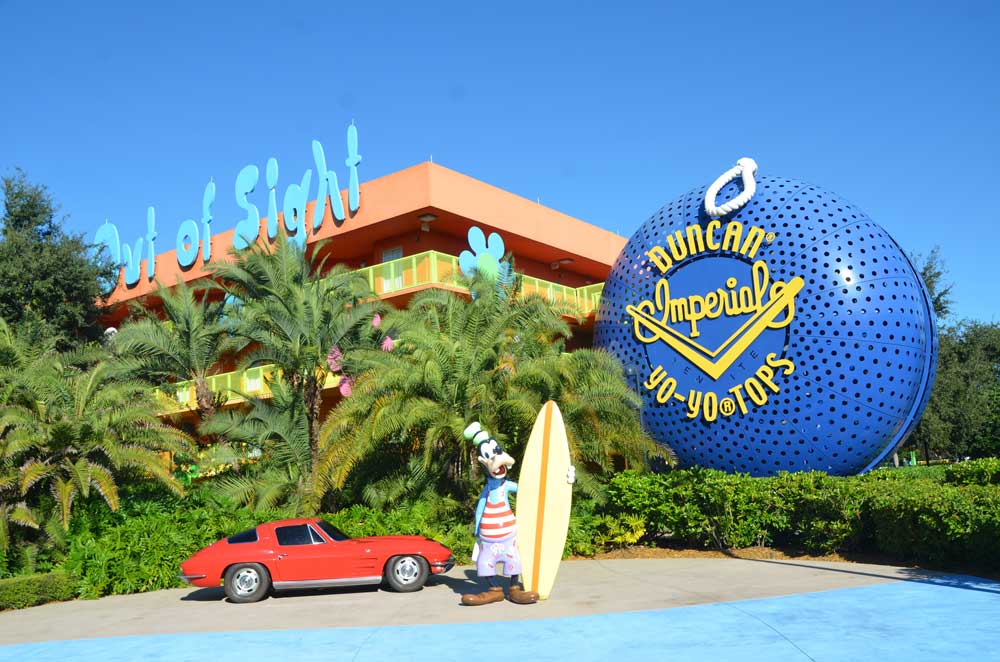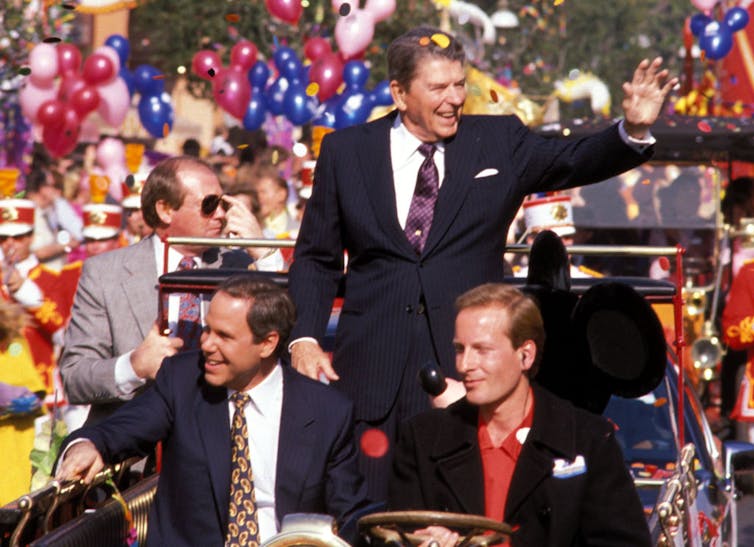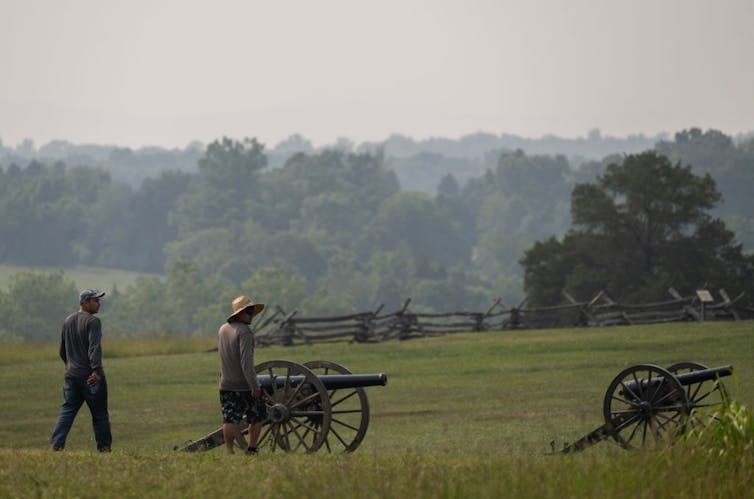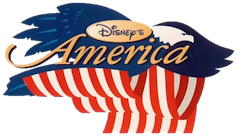
By Jared Bahir Browsh
As a top producer of children’s entertainment, Disney is no stranger to America’s culture wars.
Liberals have long criticized the company for its products’ promotion of gender stereotypes and racist tropes. Meanwhile, conservatives have excoriated the company for being “too woke,” whether it was casting actresses of color in live action remakes of the “The Little Mermaid” and “Snow White” or coming out against a Florida statute that curtails discussion of gender and sexuality in public schools.
As Disney CEO Bob Iger grapples with the unenviable task of navigating criticism from all sides, I can’t help but recall how executives decided to table an effort to “Disneyfy” American history 30 years ago.
My research and teaching investigates how media companies such as Disney construct historical narratives for popular consumption. I can only imagine how today’s culture wars would have expressed themselves at Disney’s proposed theme park, which would have featured everything from Civil War forts to Native American villages.
Disney eyes the outskirts of DC
From his early days as an animator, Walt Disney presented a sanitized and nostalgic view of America.
Mickey Mouse represented the “everyman,” while the company’s animators drew a largely optimistic portrait of America, first in the studio’s animated films and later in their theme parks. Anyone who has walked down Disneyland’s Main Street, U.S.A., witnessed Magic Kingdom’s Hall of Presidents or visited Epcot’s American Adventure can see how Disney strives to present an uncomplicated, uncritical view of the nation and its leaders.
In 1984, Michael Eisner became the company’s CEO. He was credited with revitalizing Disney’s brand through producing hit animated features such as “Beauty and the Beast” and “The Little Mermaid,” and spearheading theme parks such as Disney–MGM Studios – now known as Hollywood Studios – and Disneyland Paris.

Mike Guastella/WireImage via Getty Images
A visit to Colonial Williamsburg inspired Eisner’s next venture: a theme park based on U.S. history that would be built outside of Washington, D.C.
Beginning in 1993, the company quietly started purchasing real estate in northern Virginia using shell companies. The land acquisitions became public knowledge only a few days before the announcement of the theme park, aptly named Disney’s America.
The news was largely welcomed by politicians. Eisner had already gained the support of the state’s outgoing and incoming governors, along with the Virginia Commission on Population Growth and Development. The plan was to build the park in Haymarket, Virginia, a small, wealthy area southwest of Washington, D.C., a few miles from Manassas, the site of two major Civil War battles.
History isn’t so simple
Although Disney had diligently worked to consolidate support ahead of the announcement, signs of conflict emerged during the first press conference, which featured Bob Weis, a Disney vice president who had helped oversee the planning of several theme parks.
“This is not a Pollyanna view of America,” he told the group of assembled reporters. “We want to make you a Civil War soldier. We want to make you feel what it was like to be a slave or what it was like to escape through the underground railroad.”
Questions over how Disney would tell the complex – often discriminatory – history of the nation spurred a group of historians, led by David McCullough, to lodge their concerns: How would Disney construct its narrative of the United States? And how would the park affect Manassas, one of the most important Civil War battle sites?

Andrew Caballero-Reynolds/AFP via Getty Images
According to the original plans and brochures, Disney’s America would contain nine sections: a Colonial-era Presidents Square, an Indigenous village, Ellis Island, a factory town from the Industrial Revolution, a Civil War fort, a county fair, an early 19th-century port, a World War II-era battlefield and a Depression-era family farm.
On the surface, these themed areas seemed fitting. You could easily see them as exhibits at the Smithsonian. But issues emerged when people took into account that this was still a Disney theme park, with entertaining guests and making money likely taking precedence over historical accuracy and contemporary sensitivities and sensibilities.
The story of immigration, for example, would have been told through the musical-comedy stylings of Kermit the Frog and the other Muppets.
There were also concerns over how Disney would handle the exploitative and violent history of the treatment of a number of groups.
This included the enslavement of Africans and the genocide of Indigenous populations, the latter of which was also connected to the forthcoming 1995 release of “Pocahontas.” Historians later highlighted the film’s distorted history, and it isn’t far-fetched to imagine rides or attractions based on those misrepresentations at Disney’s America.
Mickey Mouse goes to Washington
Even as plans came together for Disney, criticism began to mount.
Disney issued an ultimatum to the Virginia legislature to improve infrastructure surrounding the site, threatening to abandon the project if the US$150 million for infrastructure improvements were not passed on the last day of the Virginia General Assembly’s legislative session in March 1994.
In June, the U.S. House of Representatives introduced a resolution opposing the park, and the U.S. Senate Committee on Energy and Natural Resources held a hearing regarding the proposed project’s environmental impact.

Wikimedia Commons
The now-infamous hearing featured discussions regarding sewage, traffic and lodging, and even saw U.S. Sen. Ben Nighthorse Campbell of Colorado, who at the time was a registered Democrat, place a Mickey Mouse hat on the lectern in a show of support.
As criticism mounted, Disney decided to shift its approach. In the summer of 1994, it renamed the project Disney’s American Celebration.
Rather than highlight periods or events in American history, the new concept would focus more on themes: Democracy, Work, Family, Generations, Streets of America and the Land.
Many of the attractions featured in these lands would have resembled attractions already in Disney parks. For example, Generations would have been similar to the Magic Kingdom’s Carousel of Progress, while the Land was already a pavilion at Epcot.
This would have also opened more opportunities for sponsorship. The Work section of the park would have included virtual factory tours of popular brands such as Apple or Crayola, while Streets of America would have featured cuisine from around the country, similar to Downtown Disney, which opened in 1997 in Disney World and in 2001 at Disneyland.
It all falls apart
Disney abruptly announced on Sept. 28, 1994, that it would abandon these plans.
Although the criticism from historians was a factor, there were also concerns about the park’s profitability in colder months. The company faced mounting debt from its Paris theme park and uncertain leadership after the death of senior executive Frank Wells in a helicopter crash in April 1994. Eisner, meanwhile, had undergone bypass surgery in July 1994.
Many of the attractions that were planned for the Virginia site found their way into Disney parks, particularly in Disney’s California Adventure in Anaheim.
Disney, both under Walt’s leadership and after his death, has long leveraged patriotism for the sake of its media content and park experiences. From Mickey Mouse to the Hall of Presidents, Disney’s nostalgic, linear and uncomplicated view of American progress has been foundational to the Disney experience.
However, an entire park dedicated to this approach – just down the road from a real battlefield integral to the bloodiest war in U.S. history – was too much for historians and other critics to ignore.
Disney’s failure to profit from an uncritical celebration of America may have been a blessing in disguise, as it avoided constructing yet another battlefield in the culture wars.
![]()
Jared Bahir Browsh is Assistant Teaching Professor of Critical Sports Studies at the University of Colorado Boulder.




























Atwp says
Am happy that Disney vision failed. Too bad other theme parks didn’t die.
Ed P says
The only mistake the entertainment industry makes is they forgot their mission statements’ pivotal word-entertainment.
Personally when I attend any sporting event, theme park, theatre, comedic show, or movie, I want a few hours of escape not a forced learning experience. Stay in your lane. Consumers are spending hard earned money and entertainment is what they expect. Simple as that.